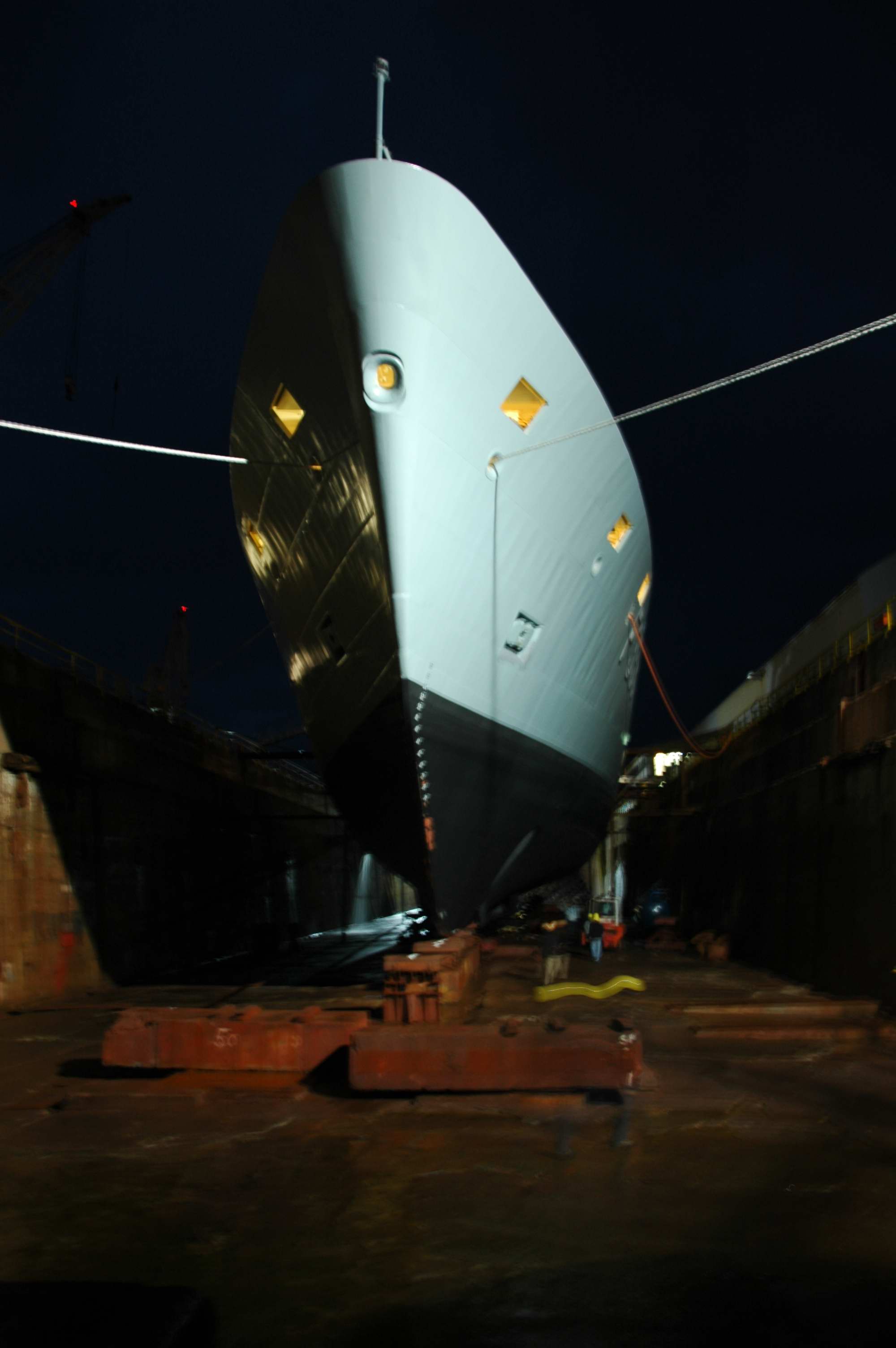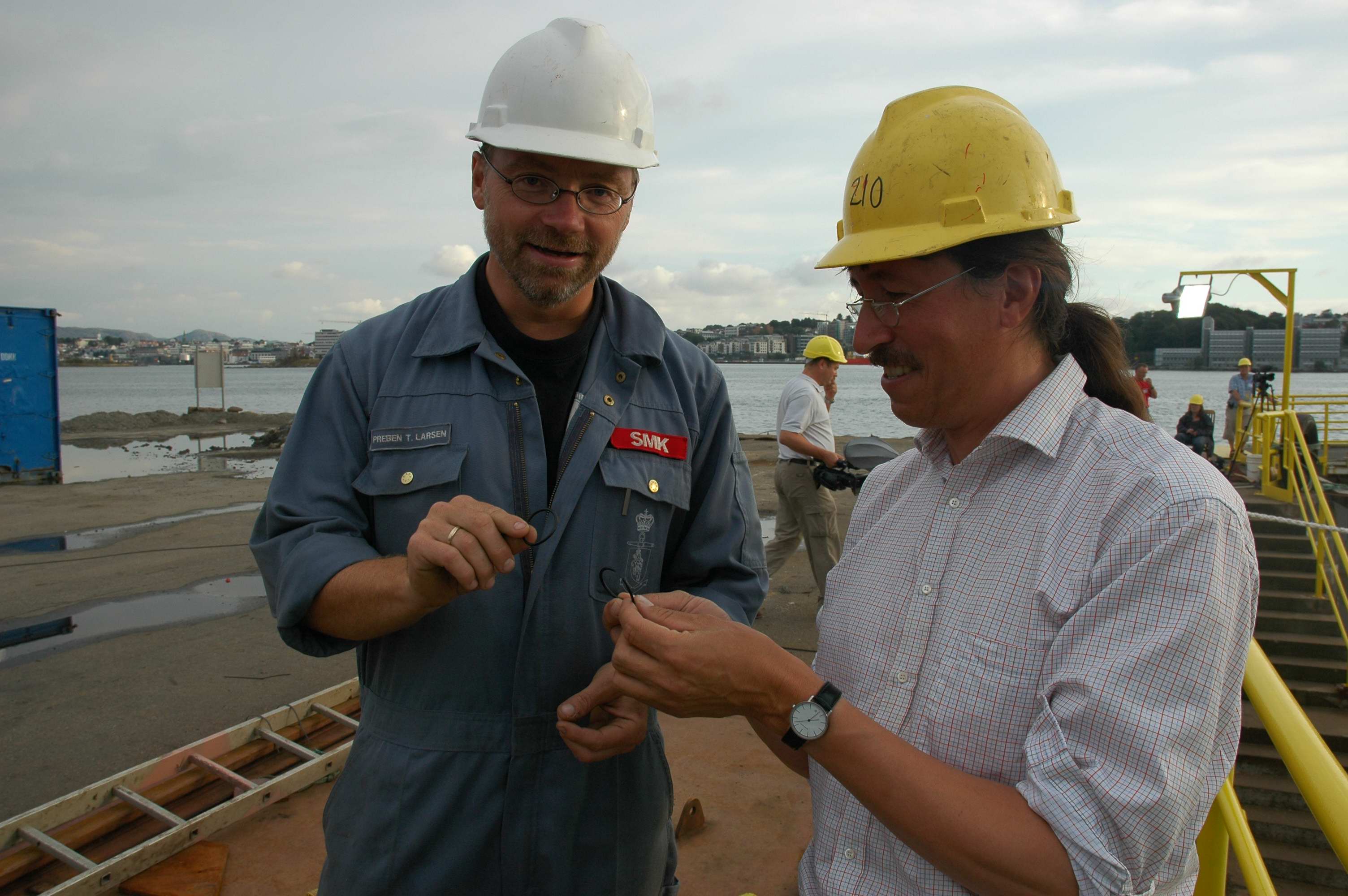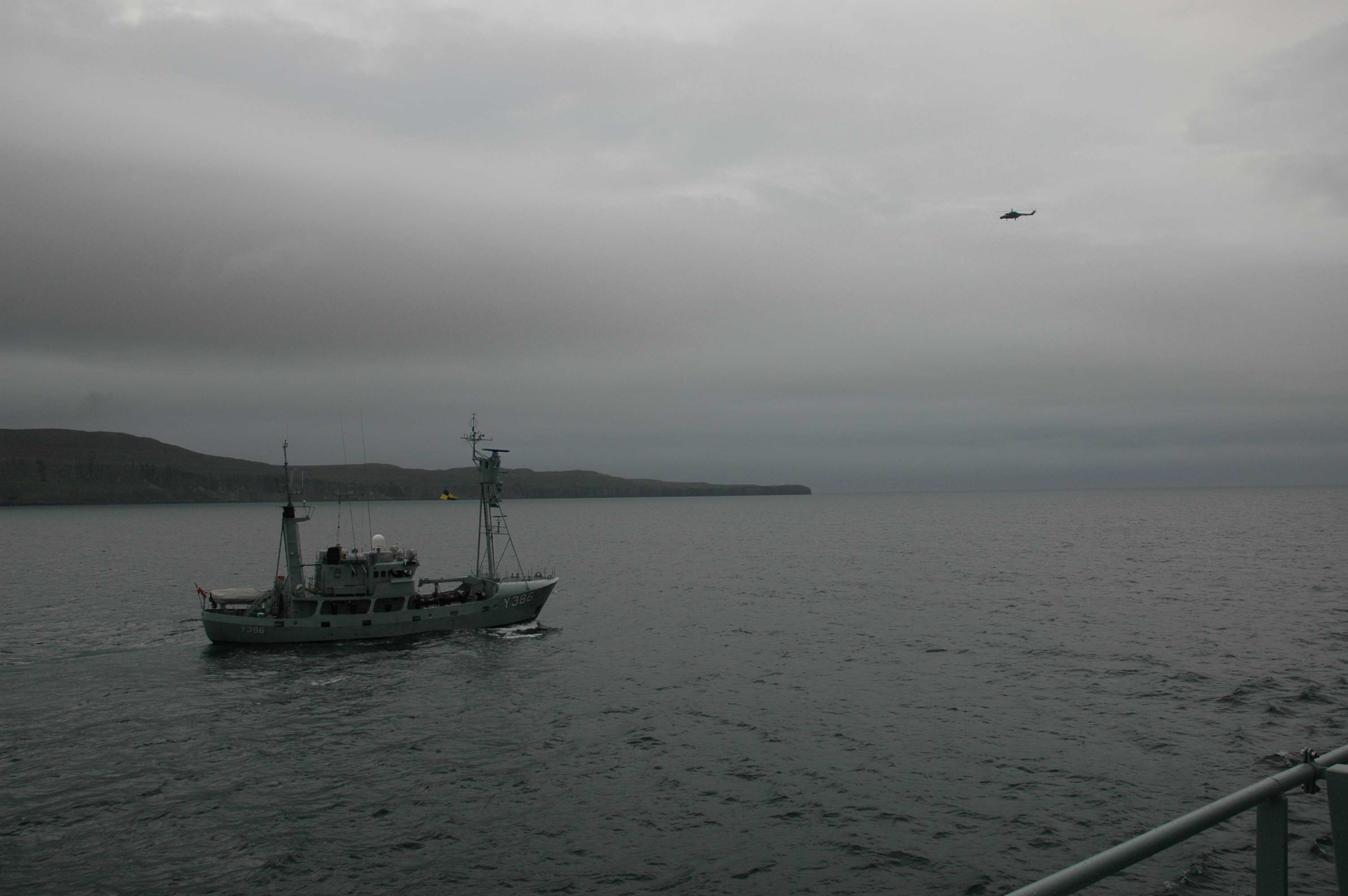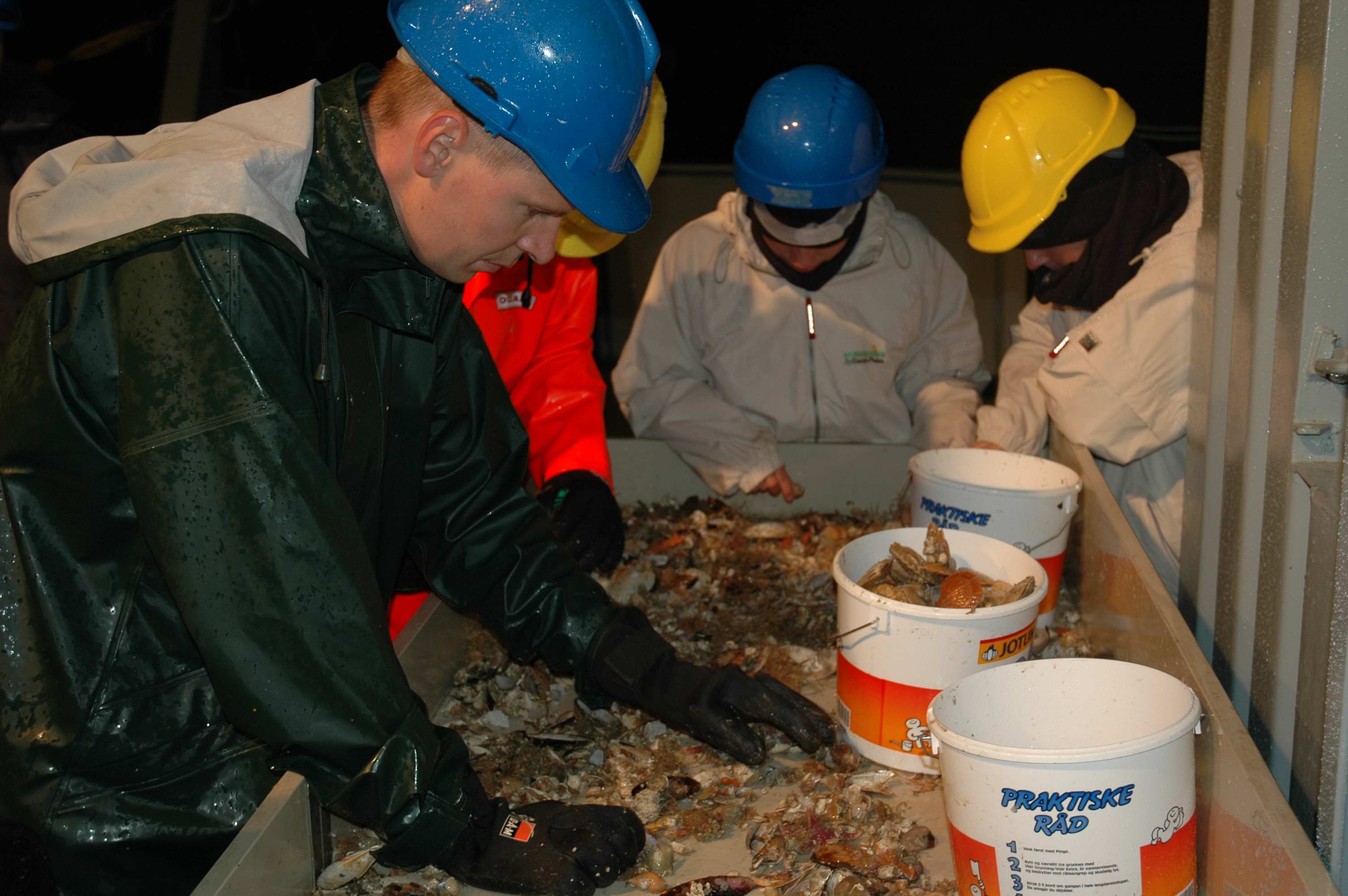First week on board the VÆDDERENNewsletter 1
Dato 18.8.2006
First week on board the VÆDDEREN
….exploration by day and night
18.8.2006
Galathea 3 Newsletter Number 1
11-18 August 2006-08-19
Friday 11 August 2006
Several thousand people came to Copenhagen’s Amalie Quay to catch a glimpse of VÆDDEREN before she sailed. Activities for children and a concert by the Navy’s Drum Corps were followed by the arrival at 6pm of HRH the Crown Prince accompanied by Helge Sander, Minister for Science, and Rear Admiral Nils Wang.
The Crown Prince inspected the crew and sent the expedition on its way with the following words: “We tend to think we know Earth fairly well. And thanks to technology, we have reached the Moon and Mars. But if you talk to the researchers who are taking part in Galathea 3, you will have a rather different impression: that the exploration of our planet has only just begun; that our knowledge of its innumerable life forms and processes– especially in the ocean – is no more than a scratch on the surface. The world does not become smaller when we learn more about it. On the contrary, every discovery leads the way into a new world with new and larger questions to be answered”.

Foto: Hempel A/S
VÆDDEREN leaves Copenhagen harbour
At 18.45 hours VÆDDEREN slipped the last rope and glided from the quay, saluted by the Sixtus Battery. Her first stop was to be Stavanger for inspection. Just before sailing, technicians had found a problem in the propeller system which necessitated dry docking.
Round- the- clock operations
During the night the first water samples were taken at 50 metres’ depth east of the island of Læsø. Researchers were already on the job of analysis.
Work is 24/7 on board VÆDDEREN. The day starts at 7.30 hours with a meeting of research and project leaders, who will discuss the programme for the 24 hours that follow. The researcher’s requests will be put to the ship’s command, who look at various possibilities before a plan is consolidated.
Following this technicians, crew and researchers set about water and ocean floor tests, involving nets, trawl nets etc. At 18.00 hours an information meeting in the ship’s cafeteria is for everyone – but the day is not over. Well into the night, samples will be recorded, mapped and analysed in the laboratories.

Photo: Morten Meldgaard, Danish Expedition Foundation
Taking water samples. The containers on the rosette open one at a time as they are being lowered, enabling information to be gathered on sea temperature, salinity etc at various depths.In dry dock – and out!
Early on Monday morning Vædderen was taken into dry dock at Rosenberg Verft in Stavanger. Docking was problematic, which meant that the stop-over was longer than expected but this had its advantages – some sightseeing in this charming port with its characteristic old warehouses.
 
Photo:Morten Meldgaard
VÆDDEREN in dry dock at Rosenberg Verft AS, Stavanger.
By Tuesday midday the problem had been identified and, a few hours later, put right. There had been a faulty seal in the hydraulic system. That same evening saw Vædderen leaving Stavanger and sailing at full speed for her next port of call, Torshavn. She passed Unst, the northernmost of the Shetland Isles, on Wednesday, mist and light rain prevailing. The waters here are rich fishing grounds and make the area attractive to gannet, fulmar and various members of the auk and puffin family which have large breeding grounds on the islands.
Around 14.00 the ship was at the 1,400 metre-deep trench between Shetland and the Faeroes: here the projects looking at marine carbon exchange and dissolved organic matter took water samples. All went smoothly: the samples revealed the low temperatures and high salinity of polar seas in contrast to the somewhat higher temperatures of other Atlantic waters.
Further on towards the Faeroes a good swell and fresh wind sent some not-so-good sailors below decks, whilst others held on bravely – albeit a little pale around the gills…..
Flying visit to the Faeroes
Thursday night was devoted to a survey of the south east coastline of the Faeroes with the ‘Ocean Sound’ project hydrophones. By 7am, the vessel was nearing Torshavn. A navy helicopter welcomed the expedition and a naval cutter did the honours with boatswains’ pipes. At 10 o’clock, project leaders from all the research teams, the Ministry of Education representative and media were in conference with members of the Faeroese press. Journalists from newspapers, magazines and television were present, together with High Commissioner Søren Christensen.

Photo:Morten Meldgaard
In the afternoon a group of members of parliament were shown round the ship by Captain Carsten Schmidt, leader Minik Rosing and Morten Meldgaard, director of the Danish Expedition Foundation. There was a great deal of enthusiasm for the venture. After this successful visit, the programme finished with a Galathea evening in the Nordens Hus concert hall. Members of the expedition gave talks and the High Commissioner hosted a reception during which ‘skærpekød’, a Faeroese speciality consisting of dried mutton, was served…
The programme was short but full – everyone conscious of the time available. Crew and researchers were busy filling the oil bunkers, repairing equipment, etc whilst some change of crew and media was already taking place. Others however had time to take part in the scheduled excursion to Kirkebø.
Efforts to make up for lost time also meant that it was decided to send two ‘Ocean Sound’ researchers by plane to Iceland to place an array of sensors to capture the song of the humpback whale. This would save at least 12 hours, enabling other researchers to carry out their investigations according to the original plan. If Vædderen reaches full speed and the weather holds (which is the outlook), and if Prince Christian Sound is free of ice (which it seems to be) the expedition will be back on track for arrival in Narsarssuaq in southern Greenland on Thursday, 24 August.


Photo:Morten Meldgaard
A triangular dredge is used amongst other things for collection of ocean floor creatures such as mussels, crabs, etc. The animals are examined and may for example be analysed for accumulation of foreign elements.
The last bulletin from the ship came at half past one on Friday morning – still lots happening on board. Crew and researchers were bottom trawling to find more evidence of xenobiotics in ocean floor creatures (materials alien to the creatures).
And so work goes on…….
Follow Galathea 3 at Google Earth and see the week’s satellite pictures at www.satelliteeye.dk/index_uk.htm. You can also keep track of the ship’s current position at this site.
|